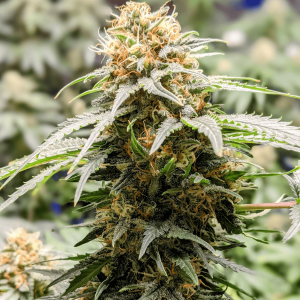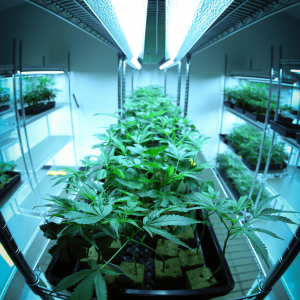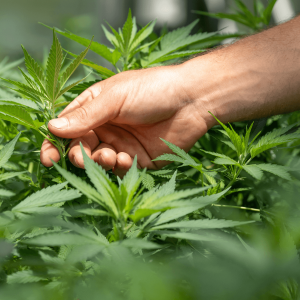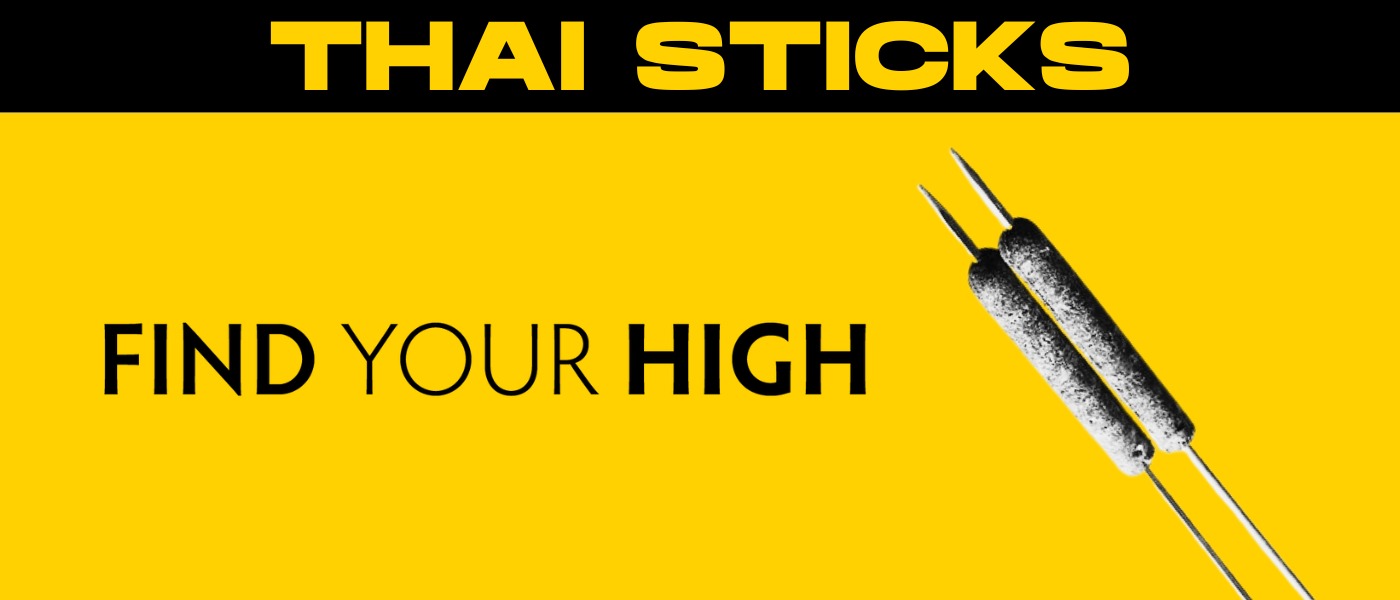Cannabis culture has a rich history spanning thousands of years, with its roots firmly planted in ancient times. However, few traditions have endured the test of time like Thai Sticks.
Traditional Thai Sticks originally came from the lush fields of Thailand, a result of the country’s time-honored cannabis culture passed down through generations. These handcrafted marijuana cigars made a huge splash in the Western world during the Vietnam War, but they’ve since faded away with the rise of modern consumption methods.
However, recently, there’s been a renewed interest in these traditional cannabis tools, signifying a shift back towards more organic and classic consumption methods.
In this blog, we will dive deep into understanding not just the historical and cultural significance of the Thai Stick, but also why it’s making a comeback in today’s cannabis landscape. Let’s begin!
What Are Thai Sticks?
Thai Sticks are essentially cannabis cigars, which were renowned during the late 1960s and early 1970s, especially among Vietnam War veterans.
These cannabis cigars hail from Thailand, hence the name, and are known for their potent and unique effects.
Definition and Characteristics
A true Thai Stick is a skewered assortment of marijuana, hash oil, and sometimes other ingredients wrapped in plant leaves and typically viewed as a cannabis cigar. It’s often characterized by its cylindrical shape, similar to a cigar, and a robust, often sweet or spicy aroma that hints at its Asian roots.
The potency of a Thai Stick can vary greatly depending on the strain of cannabis used and the amount of hash oil applied. In other words, the more potent the strain, the more powerful the Thai Stick.
Ingredients Used in Thai Sticks
The main ingredients of a traditional Thai Stick are marijuana buds, hash oil, and a skewer made from the stem of the marijuana plant.
The buds are skewered on the stem, then coated in hash oil and wrapped in marijuana leaves. They are then tied with hemp wicks and aged to allow the flavors to beautifully meld together.

Traditional vs. Modern Variations of Thai Sticks
Traditionally, Thai Sticks were completely organic, using only marijuana and its derivatives in their creation. Modern variations, however, often introduce other substances to enhance potency or flavor.
Some variants may include additional substances like kief, a powder made from the trichomes of the cannabis plant, or even non-cannabis substances such as honey or other sweeteners to amp up the flavor.
Despite these changes, the fundamental concept of the original Thai Stick remains the same: a potent, flavorful, and luxurious cannabis experience.

The Preparation Process
Choosing the right cannabis strain is the best place to start. After all, the strain you select will play a significant role in shaping the final product’s flavor, aroma, and potency.
It’s important to select a strain that aligns with your individual preferences, whether that be a high-THC strain for a potent experience or a CBD-dominant strain for a more balanced, mild, and therapeutic effect.

Gathering Materials: Bamboo Sticks, Cannabis Buds, and Binding Materials
Crafting a Thai Stick requires a few key materials: bamboo skewers, premium cannabis buds, and binding materials.
Bamboo skewers act as the ‘spine’ of the Thai Stick, while the cannabis buds will be wrapped around the bamboo skewer itself.
As for binding materials, traditionally, plant materials like hemp string, rope, and wee leaves are used, but thin butcher’s twine can be used as a modern substitute for hemp string.
Step-by-Step Guide to Rolling Thai Sticks
Cleaning and Preparing Cannabis Buds
Begin by selecting the highest-quality cannabis buds that you can get your hands on. More often than not, people choose a Thai strain or, at the very least, a strain with Thai genetics for their Thai Stick. Clean and trim them meticulously, removing any leaves and stems. Once the cannabis is clean, you can skewer the buds onto the bamboo stick vertically.
Binding and Wrapping Techniques
Next, bind the skewered cannabis buds using your chosen binding material, whether that is a hemp wick or a more modern version of hemp string. The goal is to create a tight, cylindrical stick of cannabis that remains intact throughout the drying and curing process. After binding, wrap the stick in parchment paper and refrigerate for a minimum of two hours.
Curing and Drying Process
The final step is the curing and drying process. Carefully unwrap your Thai Stick and coat it with a layer of cannabis oil or cannabis concentrate, then re-wrap it in a weed leaf or parchment paper. Leave it to dry in a cool, dark place for at least a week. After drying, your Thai Stick is finally ready to be enjoyed.
Note that while the whole process may not make way for instant gratification, true Thai Sticks are worth the extra effort and wait.
Historical and Cultural Context
Thai Sticks have a rich history embedded in the cultural fabric of Thailand.
Traditionally, they were a common method of cannabis consumption among locals, who prized the plant for its potent therapeutic properties. The ritualistic use of the Thai Stick was often associated with cultural celebrations and festivals, becoming a symbol of unity and camaraderie during these significant events.
Over time, the popularity of Thai Sticks extended beyond Thailand, leaving a profound impact on global cannabis culture. Their prominence has played a crucial role in shaping the perception and use of marijuana around the world, influencing innovative consumption methods and inspiring a wave of cannabis appreciation.

Thai Sticks: Variations and Innovations
Thai Sticks have been around since ancient times, but they’ve seen numerous variations and innovations over the centuries. Let’s explore.
Different Strains for Thai Sticks
Thai Sticks are known for their potent strains, originally developed from the cannabis plants indigenous to Thailand.
However, the diversity of strains available today is vast, each offering a unique aroma, flavor, and psychoactive effect.
Some popular strains used for making a Thai Stick include Purple Thai, Chocolate Thai, and Lemon Thai. These strains are grown for their unique qualities, offering a variety of experiences for cannabis enthusiasts. From energizing and uplifting effects to soothing and calming sensations, there’s something for everyone to enjoy.
Experimenting with Binding Materials
Traditionally, Thai Sticks were bound with hemp fibers, a method that has been used for thousands of years. But with all of the cool modern innovations coming to light, people are getting creative and trying out different binding materials like organic cotton threads, bamboo, and even edible additions.
Note that the choice of binding material can influence the combustion rate and, in some cases, add a subtle flavor to the smoke.
Fusion with Modern Smoking Devices
In an era dominated by advanced technology, Thai Sticks have also been fused with modern smoking devices.
From vaporizers to glass pipes and water bongs, these devices offer a cleaner, smoother smoking experience. For instance, by using a vaporizer, one can enjoy the pure flavors and aromas of Thai Sticks without the harshness of smoke.
These innovations have not only made Thai Sticks more versatile but also more accessible to a broader audience.
Effects and Experience
Smoking Thai Sticks gives you a unique high that sets it apart from other forms of cannabis consumption.
The intensity of the high can vary depending on the strain used, but overall, it’s often described as a slow-building, long-lasting, slow burning, and super potent experience. This is because Thai Sticks are prepared with additional layers of cannabis products like hash oil and kief.
Compared to vaping or edibles, the high from a Thai Stick is usually more intense since it’s concentrated. But keep in mind that everyone’s experience may differ based on their personal tolerance and the specific blend used.
Legality and Social Acceptance of Thai Sticks
Thai Sticks have a complicated history in Thailand.
In Thailand, weed has been traditionally used for medicinal and sometimes recreational purposes. However, due to significant international pressure, especially from the United States and its War on Drugs, cannabis was banned in the 1930s by the Thai government. Unfortunately, this marked a turning point in the legal status of weed in Thailand.
Fast forward to the current legal landscape, Thailand recently became the first Southeast Asian country to legalize medical cannabis. This is a significant step forward, reflecting a gradual shift in attitudes towards marijuana and its derivatives like Thai Sticks.
However, recreational use remains illegal, and the penalties for possession of illicit substances are still severe.
When it comes to social attitudes towards Thai Sticks, things are gradually changing. Although there has been a stigma due to strict anti-drug campaigns in the past, the legalization of medical cannabis has begun to shift people’s perspectives.
Thai Sticks, once seen as a purely recreational drug, are now being reconsidered for their potential therapeutic properties. However, this shift in perception is gradual and still has a long way to go before marijuana products like Thai Sticks become fully accepted in mainstream Thai society.
Rediscovering Thai Sticks
In recent years, there’s been a noticeable uptick in interest towards traditional ways of enjoying cannabis, like Thai Sticks.
These cannabis cigars, originally from Thailand, have a rich history and are deeply rooted in the culture. A fact that many legacy operators and cannabis connoisseurs appreciate.
The resurgence of Thai Sticks isn’t just about their potency, but also their artistic value. They’re carefully handcrafted using top-notch cannabis strains, making them much more than just another way to get THC into your system.
They’ve become a symbol of the artistic and cultural revival, appealing to cannabis consumers who appreciate the craftsmanship behind each piece. Nowadays, you can find Thai Sticks at select high-end cannabis dispensaries and online platforms, where you can get a true taste of this vibrant tradition.
Conclusion
In conclusion, Thai Sticks not only represent a significant piece of cannabis history, but they also provide a unique and authentic smoking experience.
The key to their enduring popularity rests in the meticulous preparation process and the premium quality of the cannabis used. As experts in all things weed, it’s important for us to encourage you to consume responsibly and to acknowledge the cultural heritage of this iconic product.
By choosing Thai Sticks, we are not just indulging in a cannabis product, but we are also preserving and celebrating a rich and vibrant cannabis culture that spans decades – maybe even centuries. Let’s continue to honor this legacy and spread the word about the craftsmanship and heritage that goes into making every Thai Stick.
Frequently Asked Questions
1. What is a Thai stick?
A Thai stick refers to a form of cannabis cigar from Thailand, traditionally characterized by high potency. It involves the intricate process of skewering cannabis buds closely together on a stem or stick and then wrapping them tightly with the plant’s leaves. The entire stick is then often dipped in hash oil for an extra potent effect. This traditional method of preparation has been adopted worldwide, offering users a long-lasting and intense experience.
2. Do they still make Thai sticks?
“Thai weed sticks, once a popular form of cannabis consumption, have become rare in today’s market. However, they are not completely extinct. Some specialized growers and cannabis enthusiasts still produce Thai weed sticks, keeping the tradition alive. Bear in mind that due to their complex and labor-intensive production process, Thai sticks are often more expensive and harder to find than other forms of cannabis.
3. What happened to Thai sticks?
Thai sticks, once a popular form of cannabis cigar in the 1960s and 1970s, gradually faded from the market primarily due to shifts in laws and production methods. The intensification of the war on drugs in the late 20th century meant that smuggling large bundles of cannabis tied around sticks, a trademark of Thai stick production and marijuana trade, became increasingly risky. Furthermore, advancements in cannabis cultivation led to the development of more potent strains and more innovative technology that could be found locally, reducing the demand for imported products like Thai sticks.
4. What is the difference between Cannagar and Thai stick?
A Cannagar and a Thai stick, while similar, are fundamentally different cannabis products. A Cannagar, short for ‘cannabis cigar’, is a large cigar made entirely of cannabis. It is often wrapped in marijuana leaves and can take hours, or even days, to smoke due to its size and density. A Thai stick, on the other hand, is a traditional form of smoking cannabis in Thailand. Though it’s often roped in with other cannabis cigars, a Thai Stick is essentially a skewer of cannabis buds that have been carefully threaded onto a bamboo stick, coated in hash oil, and often wrapped in marijuana leaves. The major difference lies in their preparation and smoking duration, with Cannagars typically being larger and longer-lasting compared to Thai sticks.

 Rewards
Rewards





